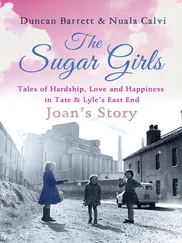Ray’s death was clearly a great loss for Sandwich. His friend Joseph Cradock recalled the period after her murder in his Memoirs . He tells the story of his embarrassment when he first visited Sandwich after Ray’s death. Entering the Earl’s study ‘where the portrait 52 of Miss Ray, a most exact resemblance, still remained over the chimney-piece’, Cradock rather clumsily ‘started on seeing it’. Sandwich ‘instantly endeavored to speak of some unconnected subject; but he looked so ill, and I felt so much embarrassed, that as soon as I possibly could, I most respectfully took my leave’. A similar incident occurred some time later when Sandwich was invited to dine with a few friends at the house of ‘our open-hearted friend Admiral Walsingham’. The evening went well, and Sandwich seemed to regain his spirits, until one of the guests put Sandwich in mind of Ray: ‘one of the company requested that Mrs Bates would favour them with “Shepherds, I have lost my Love”. This was unfortunately the very air that had been introduced by Miss Ray at Hinchingbrooke, and had been always called for by Lord Sandwich. Mr Bates immediately endeavored to prevent its being sung, and by his anxiety increased the distress; but it was too late to pause.’ Sandwich was mortified. He struggled to overcome his feelings, ‘but they were so apparent, that at last he went up to Mrs Walsingham, and in a very confused manner said, he hoped she would excuse him not staying longer at that time, but that he had just recollected some pressing business which required his return to the Admiralty; and bowing to all the company, rather hastily left the room 53 ’.
Yet, within a year, Sandwich had a new mistress, Nelly Gordon, who was to remain his consort until his death in 1792, and who also bore him children. (In his will he arranged an annuity of £100 a year for life for her – in addition to another he had given her in her lifetime for the same sum – and a further £25 a year for life for her child.) Nor was he a recluse. The end of the American war and his active political career enabled him to indulge his passion for music, and he was the key figure behind the enormously popular concerts held to celebrate Handel’s Centenary in 1784.
Apart from Ray’s children – young Basil was soon in all kinds of trouble at school – Ray’s companion Caterina Galli suffered the consequences of her murder more than anyone else. Deprived of her position in Sandwich’s household, she was ostracized from polite society, and could no longer make a living by teaching rich young girls to sing. The Duchess of Bedford wrote to her that she was ‘sorry to inform Signor Galli that she made a determination, at the time the unfortunate affair happened in which she was concerned, never to take notice more of her in any way 54 ’. The Duchess did so because she was sure that ‘whatever appearances being against her if she was blameless her good protector would never let her want a proper maintenance without applying to the public 55 ’.
Galli wrote a succession of letters to Sandwich in her native Italian complaining of her plight. A month after the murder she told Sandwich, ‘I am ill and afflicted to see myself exposed in a book and in the papers so unjustly wronged as well as my character ruined that I don’t know how I can live in the world 56 .’ Nine months later her situation was even worse:
I cannot assist myself in my profession, being badly liked by everyone who believe me to be guilty; I have lost my reputation in the face of my protectors being sufficient to madden any person … Where can I look for assistance? They all tell me I should defend myself against the charges and that my silence makes me more culpable and that they will know that your excellency does not admit me and that you dislike me. Lord I believe I have given you sufficient proofs of my innocence at not having taken any part of deceit, I have taken in due time my oath. I have been by orders of your excellency to the court, did not hide myself or otherwise flee. I have always been prepared to go before any judge and prove my innocence. I have lost both my health and reputation as well as money through me not defending myself and punishing the culpables, and all this I did through the certainty that your excellency will be my protector as you sent me information both by word and letter that you would always help me 57 .
Impoverished, Galli was forced to return to the stage, though her voice had gone. She made a number of concert appearances in the 1790s, when she was deemed to cut a pathetic figure, and was given money by the Royal Society of Musicians. We know Sandwich donated twenty guineas to her and may have given her more. But she remained in sad circumstances, and when her husband died she had to borrow the money to bury him. As a result of Martha Ray’s murder she had lost her employment and could no longer work in the job she knew best and loved.
These, as far as I can tell, are the ‘facts’ of the murder by James Hackman of Martha Ray. They make up the story that almost all commentators, both at the time and subsequently, agree on. But they leave much unanswered. No one doubted that Hackman killed Ray, that he was the black figure who came out of the crowd and shot her to death before a shocked public. But what lay behind the murder? Why did he kill her? What was their relationship like? Was Hackman demented, or did he have understandable reasons to shoot her? Such a brutal killing, like any act that temporarily tears the social fabric apart, called out for explanation. But the facts alone could not provide an answer. Evidence about motive was hard to come by, not least because, as we shall see, there were interested parties concerned to keep the case under wraps. The vacuum created by a lack of information was, however, quickly filled by supposition, speculation and interpretation. For plenty of people, for many different reasons, wanted to publicize their own versions of the lives of Hackman, Ray and Sandwich.
The murder was, of course, a personal tragedy, but it was also a public event. Public, not only because it involved one of the most prominent households in the land and one of the nation’s most important political figures, but because it received so much publicity. In the 1770s London boasted a thriving press with five daily and eight or nine triweekly papers that were widely circulated in London and in many provincial towns. By the time of Ray’s death newspaper proprietors were paying the government an annual stamp duty for more than 12.5 million papers. The provinces also had their own papers – nearly forty by the 1770s – that shamelessly plundered news and information from the London press, adding vignettes of their own. Within days of Hackman’s crime accounts of the murder, commentary on its significance and speculation about why it had happened flowed out from the newspaper printers’ offices in the vicinity of St Paul’s Cathedral and spread across the nation, as news and stories were duplicated in local papers, then in magazines and periodicals. Readers of the Public Advertiser , the Gazetteer , the St James’s Chronicle , Lloyd’s Evening Post , the London Evening Post , the Norwich Mercury , and the Newcastle Chronicle – in fact of every London paper and most of those in the provinces – were regaled with the unfolding story of Hackman’s crime. The flow of information 58 explains why in his Norfolk parish Parson Woodforde broke off his usual culinary catalogue – no diarist has devoted so much space to the joys of the table – to bewail the fate of Hackman, a fellow man of the cloth, while at Salisbury the gentleman musician and young lawyer John Marsh tut-tutted in his journal about the fate of a young man he had known at school.
Читать дальше












